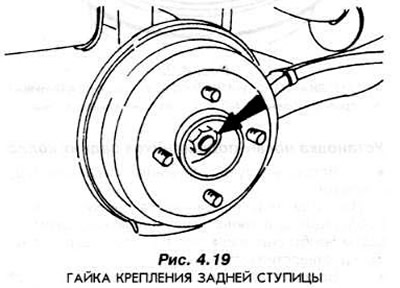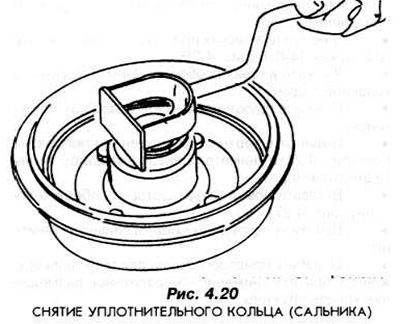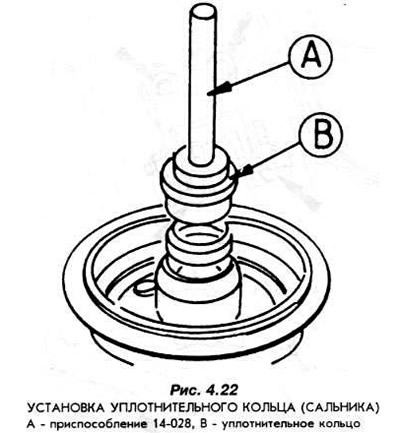Note: Support the body in places specially designed for this purpose.
Remove rear wheels.
Loosen the brake pad adjusters through the holes in the brake shield.
Remove the outer anti-oil casing of the brake drum.
Notes: The cover is damaged during disassembly and must therefore be replaced with a new one.
Loosen the center hub nut (pic. 4.19).

Note: Nuts have left and right hand threads. The nut with the left thread is on the left side.
Remove the hub with the brake drum.
Remove the o-ring from the hub using a special tool (stuffing box) (pic. 4.20).

Take out the inner races of the tapered bearings.
Remove the outer rings without damaging the holes.
Remove old grease and wash the hub.
Installing new rear wheel bearings
Insert the outer races of the new bearings into the hub.

For this purpose, tool 15-051 is used. The rings must be installed in such a way that they would rest on the ledge of the hole in the hub with their entire surface.
Insert a new O-ring using tool 14-028 (stuffing box) (pic. 4.22).

Fill the outer bearing with grease and insert it into the hub.
Put the hub with the drum and bearings on the axle neck. Tighten the hub center nut to the recommended torque.
Install a new anti-oil (anti-lubricant) case.
The bearings are designed in such a way that clearance is automatically created in the system of both hub bearings by tightening the central nut.
To obtain the correct clearance it is necessary that the bearings (internal and external) were made by the same manufacturer. The neck and hub must be in good condition without any damage.
Install the rear wheels of the car and press the brake pedal several times to ensure that the pads are properly seated in the drums.
Visitor comments